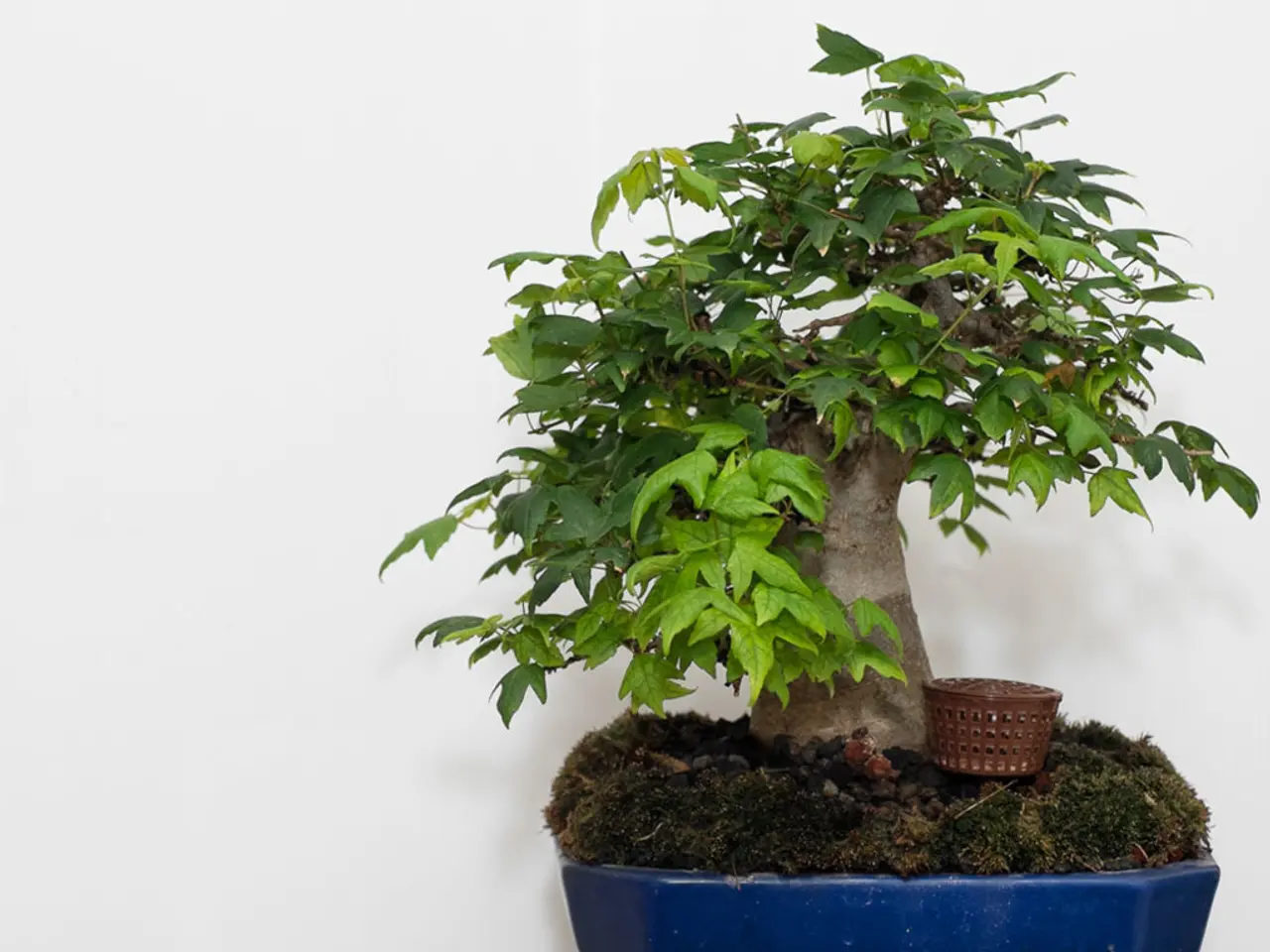Guide to Nurturing a Fruit Bonsai Tree from Seed: A Sequential Process
Growing a bonsai fruit tree from seeds is an exciting and rewarding endeavor for any plant enthusiast. This article will take you through the steps required to successfully grow a bonsai fruit tree from seeds, providing you with a comprehensive guide to help you along the way.
Steps to Grow a Bonsai Fruit Tree from Seeds
- Selecting the Right Seeds:
- Choose Species: Opt for fruit trees that can thrive in smaller spaces and are suitable for bonsai, such as nectarine, apricot, cherry, or plum. However, most fruit trees are not typically grown as bonsai due to their size and growth habits.
- Using Store-Bought Fruit Seeds: If using seeds from store-bought fruit, ensure they are viable and clean. Nectarine seeds, for example, can be used after drying them at room temperature for about a month.
- Preparing Seeds for Germination:
- Drying and Shelling (for stone fruits): Gently crack open the pit to release the seed, akin to cracking a nut.
- Soaking and Scarification: Soak seeds in water for 24 hours to soften the seed coat (for coniferous seeds like pine).
- Stratification: Many tree seeds require cold stratification, which mimics winter conditions. Place seeds in moist peat moss or sand and refrigerate them for 2 to 3 months.
- Planting Seeds:
- Soil Selection: Use a well-draining potting mix, as bonsai trees prefer moist but not waterlogged soil.
- Planting Containers: Use small pots or containers to prevent the roots from becoming too large too quickly.
- Sowing Seeds: Plant seeds about 1/4 inch deep in the soil. Cover with a thin layer of soil and gently water.
- Caring for Newly Planted Seeds:
- Lighting: Provide bright, indirect light. Avoid direct sunlight, which can cause overheating.
- Temperature: Maintain a consistent temperature between 65°F to 75°F (18°C to 24°C).
- Humidity: Keep the soil consistently moist but not soggy.
- Caring for Germinated Bonsai Seeds:
- Transplanting: Once the seedling has developed a few sets of leaves, it may be transplanted into a larger pot if necessary. However, keep the pot small to control root growth.
- Watering: Continue to keep the soil moist without overwatering.
- Pruning: Begin training the tree by pruning it to maintain a desired shape and size.
Best Time to Sow
- The best time to sow seeds depends on the species and climate. For species requiring stratification, it's best to start the process in winter or early spring, allowing them to germinate in spring.
Equipment Needed
- Pots: Small pots or seed trays for germination.
- Soil: Well-draining potting mix.
- Lighting: Grow lights or a sunny windowsill.
- Watering Tools: Watering can or spray bottle.
- Pruning Tools: Bonsai pruning shears.
Best Places to Buy Bonsai Seeds
- Etsy: Known for a wide variety of bonsai seeds and guides.
- Specialty Gardening Stores: Can offer specific advice and seeds tailored to bonsai cultivation.
- Online Marketplaces: Such as Amazon or eBay, which often have a range of seeds and tools.
Growing a bonsai fruit tree from seed requires patience and dedication. Most fruit trees are not ideal for bonsai, so consider starting with species more commonly used for bonsai, like ficus or juniper, for a more successful experience.
Place the container in a warm, sunny location with access to grow lights if needed. Clean seeds thoroughly before drying and storing. Look for organic or pesticide-free fruits for the best results. Essential equipment includes small pot, spray bottle, tweezers, plastic dome or plastic bag, grow lights, and bonsai maintenance tools.
After transplanting, care for your bonsai tree like any other bonsai tree by following a regular watering schedule, fertilizing schedule, and keeping the plant and soil clean. Thin out weaker or crowded plants once your bonsai fruit tree seeds have germinated and started to grow to ensure the remaining ones have enough space, nutrients, and light to thrive.
Regularly monitor your bonsai tree for pests and take appropriate action to protect it. Visit local nurseries or garden centers for bonsai seeds. Create a greenhouse effect by using a plastic dome or plastic bag. Plant seeds in a well-draining soil mix, cover seeds lightly with soil, and water gently.
Use a spray bottle or fine mist nozzle for watering bonsai fruit tree seeds to distribute water evenly and prevent excessive saturation. Fertilize using a bonsai-specific fertilizer at quarter-strength until your plant is established, then gradually go up to full strength. Stratification helps break the seed's dormancy, allowing it to germinate more easily.
Stratification requires cool temperatures and specific conditions that mimic winter. Some seeds may require stratification before germination. Join a bonsai club or society in your area for unique and rare seed options. Best time to sow seeds is spring or early summer for most fruit trees, with specific variations for temperate and tropical fruit trees.
Important soil considerations include a well-draining mix with organic and inorganic materials. Different fruit tree species have varying light requirements. Research the natural habitat of your specific type of bonsai fruit tree to determine the ideal lighting conditions. Transplant seedlings into individual pots or containers after they have grown strong enough, usually after 6-12 months. Use a pot slightly larger than the current one to give roots room to spread out.
Consider using seeds from fruits that you already enjoy eating, like apples, peaches, or cherries. Maintain a temperature between 60-80 degrees Fahrenheit and between 50-70% humidity for germination and growth. Bonsai fruit trees prefer a warm, semi-humid climate.
- The article suggests that choosing tree species like nectarine, apricot, cherry, or plum would be suitable for growing bonsai fruit trees, as they can thrive in smaller spaces and are more commonly used for bonsai.
- To create the perfect home-and-garden environment for your growing bonsai fruit tree, consider investing in equipment such as grow lights, bonsai pruning tools, and well-draining soil to help ensure its success.




